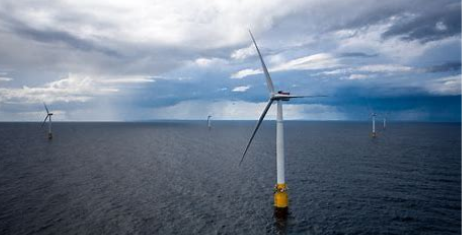It is expected that the grid connection scale of China’s offshore wind power will exceed 100 million kilowatts by 2030
Vigorously developing offshore wind power is the Critical path method for China to build a new power system. With the development of offshore wind power moving towards deep and distant seas, how to ensure stable power transmission has become an important research topic.
As of May 22nd, the first offshore wind power transmission project in China, Jiangsu Rudong Sea Wind Power Flexible DC Project (hereinafter referred to as “Rudong Project”), undertaken by State Grid Economic and Technological Research Institute Co., Ltd. (hereinafter referred to as “State Grid Economic and Technological Research Institute”) for complete design and engineering debugging, has been operating safely and stably for 513 days, achieving an annual online electricity consumption of approximately 2.6 billion kilowatt hours, equivalent to approximately 1.05 million households’ annual electricity consumption, Provided a key solution for the large-scale development of offshore wind power in the deep sea.
The 14th Five Year Plan for the Development of Renewable Energy proposes to optimize the layout of offshore wind power and carry out far-reaching offshore wind power planning. In recent years, the installed capacity of offshore wind power in China has continued to grow. As of 2022, the cumulative installed capacity has exceeded 30 million kilowatts, ranking first in the world. Affected by factors such as ecological environment protection and the occupation of transportation channels, offshore wind power resources are becoming increasingly scarce. The distant sea has broader sea resources and larger wind energy reserves, with greater development potential.
Moving towards the deep and distant sea means a longer transmission distance, and large-scale grid connection of wind power has become a challenge. The traditional AC transmission method is limited by the power of cable charging and is only applicable to the grid connection of small capacity offshore wind power, while the large capacity offshore wind power in the open sea must use flexible DC grid connection technology. “Li Ming, director of the DC Technology Consulting Center of the State Grid Economic Research Institute, said that before 2016, the flexible DC grid connection technology of the open sea wind power was still tightly blocked by foreign countries for a long time, with no experience to learn from, and independent innovation is the only way out.
To overcome this challenge, the State Grid Economic Research Institute has established a research team for the grid connection technology of offshore wind power. They have successively overcome major technical challenges such as the “source grid direct” interaction and collaboration of high-voltage and large capacity offshore wind power, DC system construction, complete equipment research and development, and engineering design implementation. They have completed innovation in the flexible DC series of high-voltage and large capacity offshore wind power, and developed a complete set of technical solutions with fully independent intellectual property rights.
Zhao Zheng, the project manager of the Rudong Project of the State Grid Economic Research Institute, introduced that the difficulty of “source direct network” interaction and collaboration is mainly due to the large-scale offshore wind power island flexible direct receiving end single line, long-distance feeding into the power grid, the lack of filtering devices in offshore wind farms, complex system coupling characteristics, and severe harmonic degradation. After overcoming this challenge, it can ensure that the million kilowatt flexible DC can smoothly traverse under multiple fault conditions, while effectively resolving the risk of broadband oscillation when offshore wind power is connected to the flexible DC system.
Source: CWEA



